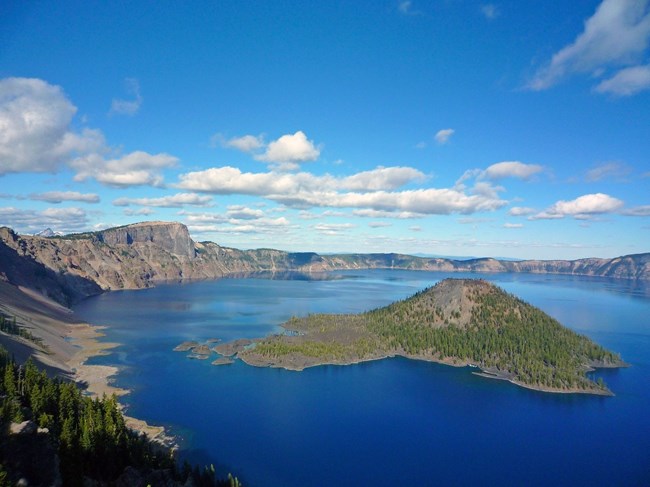Learn about NRCAs
The Natural Resource Condition Assessment (NRCA) Program provides framework, funding, and publishing support to parks to aid in the synthesis and documentation of natural resource conditions. Condition assessment reports are a tool to describe selected park resources, and record a snapshot of their current condition, identify trends, and identify potential or current threats and stressors. Understanding the condition and trend of natural resources is key for parks and NPS planners to appropriately prioritize and allocate stewardship resources.

NPS photo
Traditional NRCA Report: 2013
In an effort to better understand the natural resources and processes present within Crater Lake National Park, a Natural Resource Condition Assessment was conducted and published in 2013. This assessment was a collaborative effort between National Park Service representatives, Oregon State University, and Southern Oregon University. This team examined available data and park needs, and chose 7 resource topics to assess:
- Precipitation, temperature, snowpack, and lake levels |
||
- Surface water quality |
||
- Aquatic life |
||
- Terrestrial vegetation |
||
- Wildlife |
||
- Air quality |
||
- Natural quality of the park experience |
The assessment found that many resource topics had indicators with mixed conditions. The majority of the indicators were given a rating of moderate concern, or good condition. Park management has given the greatest attention to monitoring and maintaining the lake’s water quality, particularly its distinctive color and clarity. Factors that may support that will benefit from additional research, and could include the seasonal timing, sources, and transport and cycling rates of various micronutrients, fine particulates, and naturally-occurring organic substances.
Aside from issues surrounding the caldera lake, the most significant natural resource concerns in this park are considered to be the altered distribution of forest stand ages. This is associated with major changes in physical structure at the stand and landscape scales, as well as longer periods between fires and increased extent of invasive pathogens.
For other reports and natural resource datasets visit the NPS Data Store.
Source: NPS DataStore Collection 7765 (results presented are a subset). To search for additional information, visit the NPS DataStore.
Last updated: August 15, 2022
